While we were in Chiang Mai suffering over the food, I comforted myself with the thought that in a week we would be in Taipei, feasting like a King and Queen—the Royal Couple of Noodle-vania, as it were—and even though I’m in Taipei right now I still salivate at the mere thought of those chewy, glutinous flour noodles. SE Asia’s rice noodles are good and all, but in a noodle-to-noodle throwdown you know who would come out on top.
But really, “comfort” is exactly the right word, because this is the type of food I grew up eating. I may not know how to say “politics” or “municipality” in Chinese, but I sure as heck know my xiao long bao from by jiao zi.
Here is a primer on some of the best simple dishes that Taipei has to offer.
Dumplings (Jiao Zi)
This is a staple of Taiwanese cuisine, and you probably known them as gyoza. Jiao zi can be stuffed with all different kinds of fillings (xiar), but the most popular is minced pork or pork and leek. We’ve also tried a “Korean filling” version that is a little bit spicy, but we don’t like them as much as the good, old-fashioned pork or pork and leek versions. They can be steamed, boiled in water, or pan-fried (in which case, they are called potstickers). I like to dip them in a mixture of soy sauce, vinegar, chili sauce, and sesame oil.
Beef Noodle Soup (Niu Rou Mian)
One of my all-time favorite meals in a bowl! The beef used in this dish is quite tendinous, so it is stewed for hours on end, creating an ultra-rich broth and meat that falls apart in your mouth. Spinach or lettuce (they cook lettuce here) is added to your bowl along with noodles (your choice of thickness), and you can choose to add chili sauce and suan cai, a type of sour pickled vegetable that I just can’t get enough on.
Spring Onion Pancake (Cong You Bing)
This is exactly what it sounds like—a fried pancake mixed with spring onions. The dough is hand-rolled and the best cong you bing is somewhat flaky—they achieve this by scrunching up the pancake during the cooking process. It is so simple, but so, so good. It can be served with an egg fried on top.
Sesame-paste noodles (Ma Jiang Mian or Liang Mian)
This is a noodle dish served cold, tossed with a sauce of sesame paste (the black kind, like the stuff in the middle of mochis). It might seem a little strange to Americans since black sesame is often associated with sweet things, rather than a salty dish. But trust me, it’s good. There are usually some raw vegetables shredded on top…you mix it all up and eat it down.
Pork Buns (Zhu Rou Bao)
You are probably familiar with buns like these, filled with char siew, or barbecued pork. Char siew (or cha sao in Mandarin) buns are actually a Hong Kongnese thing; the buns in Taiwan are usually stuffed with the same pork filling as jiao zi, but the outer shell is made of soft, fluffy, and semi-sweet bread-like dough. We’ve also discovered a really delicious vegetable version filled with cabbage and spring onion (pictured on the right side in the photo below).
Soy Milk (Dou Jiang)
A very common Taiwanese breakfast consists of a bowl soy milk, served either sweet or salty. Yes, I said salty. And yes, it sounds weird, and for a long time, I wouldn’t eat it this way, but I’ve grown to like the salty version (though I still usually order it sweet). Salty soy milk usually includes some pieces of you tiao (which is Chinese fried dough), spring onions, pickles vegetables, and ginger. Chinese soy milk tastes almost nothing like American soy milk; it is chalkier and has more of the bean flavor than its American counterpart. It is often eaten with cong you bing (in this case, fried with an egg) or something called sao bing-you tiao. Sao bing is a flaky pastry covered in sesame seeds; it is shaped like a small envelope and indeed, you split it open and sandwich a you tiao in the middle of it. You tiao is often referred to as a “Chinese doughnut,” but I disagree with this assessment, as they are not sweet at all. Basically, it’s just fried dough.
Za Jiang Mian
Za jiang is like the bolognese of Taiwanese food, but obviously with a Chinese slant. The sauce is made with minced meat, soy sauce, and fermented beans. This version also has some baked tofu and steamed bean sprouts added. Also note that this particular version of the dish is made with dao xiao mian, or knife-cut noodles. A guy stands over a boiling pot of water, holding a huge block of dough in one hand and a special knife in the other, shaving off noodles off the block straight into the boiling water. He might as well just shave them straight into my belly, given how fast we gobble this stuff up.
Little Dragon Dumplings (Xiao Long Bao, aka XLB)
Kind of like jiao zi, except with a soupy surprise inside! Xiao long bao are stuffed with minced pork and they are ALWAYS wrapped in this way (with a little twist at the top). The chef wraps a frozen chunk of soup stock into the center of each bao before they are steamed to perfection, so when they come out of the bamboo steamer all piping hot, each bao will explode into your mouth with porky, soupy goodness. If for some ungodly reason I am given only one more meal to sustain me for the rest of my life, please let it consist of XLBs.
Cold Appetizers (Xiao Chi)
Most places that sell simple meals revolving around noodles or jiao zi will also offer cold appetizers so you can, you know, get some nutrition along with your carbs (what a concept!). You can order any number of things from sliced meats to intestines to pig’s ears. Since we are wusses and are too afraid to eat things like pig snouts, our favorites are the cucumber salad (small mini-cucumbers crushed up and tossed with chili, sesame oil, and vinegar), and the plate on the left, which consists of baked tofu, seaweed, and cha ye dan, or tea-leaf eggs. Basically, the eggs are hard-boiled in a tea-leaf concoction, turning them dark brown. They sell tea-leaf eggs in the 7-Elevens around here and rumor has it that each store (and they are ubiquitous here, like one every block) sells two huge boiler pots full of them every day. I guesstimate that each boiler pot holds about 60 eggs…that’s 120 eggs for EACH store!!! They must sell tens of thousands of tea-leaf eggs each day in Taipei alone!
Tomato and Shredded Pork Soup (Fan Chie Rou Si Tang)
I’m not sure if this can be considered a common dish in Taiwan, as I have never had it in a restaurant before I came here. We grew up eating this kind of tomato soup, though my mom didn’t usually add noodles—Wendy’s version had only tomatoes and poached scrambled egg (like the kind that comes in egg drop soup). I don’t know if it is the stock that they use, or if they stew the tomatoes in the soup for an extra long time, but the flavor is really particular; so much so that when I first tasted it, I turned to Jeremy and said, “this soup tastes like my childhood!”
Bakery Goodies
Taiwan’s bakeries are amazing too, and it seems that you are never more than half a block away from a bakery (or a 7-Eleven) in Taipei. Jeremy and I have definitely visited the bakery one too many times, and just this week, we were noticing that our waistlines we complaining a bit about our bakery habit (though our stomachs made nary a peep).
Zong Zi
This is a sticky rice cake, stuffed with various things like shredded pork, mushrooms, bamboo shoots, and peanuts. Then the whole thing is wrapped in a bamboo leaf (always in this tetrahedral shape) and steamed. When I was growing up, I preferred them with plain white rice (dipped in sugar), but now I like the salty ones (though we’ve recently eaten a few that have a weird white glob of fat in the middle of them, which we don’t like). They make a great hiking food since they’re self-contained!
Hot Pot (Huo Guo)
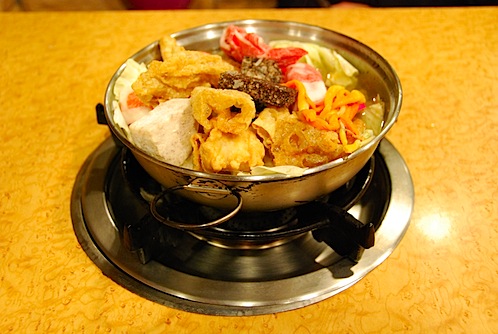
Taiwanese LOVE their hot pot! I counted five hot-pot restaurants within a 2-block radius of our apartment alone. Hot pot restaurants usually have tables with burners built right into them. You choose whatever thinly-sliced meat you want (you can even choose bacon!) and it is brought to your table raw, along with some frozen veggies. The hot-pot pictured above contains of wild boar meat—a specialty in the central-Taipei region of Alishan. Growing up, we just filled our hot pot with plain water, but all the hot-pot restaurants here fill the pot with soup stock. You drop your meat and veggies into the boiling liquid in order to cook it, and then you fish it out into another, smaller bowl filled with sauce.
In my family, hot-pot nights always begin with the whole sauce-making ritual: dozens of jars of strange and stinky pastes and sauces were laid out on the table…you add a small smidge of whatever looks/smells good into your bowl, and crack a raw egg into it before scrambling the egg/sauce mixture. When you fish your meat and/or goodies out of the hot pot, you transfer them into the raw egg concoction, and eat it up. The raw egg thing might scare some people, but I promise you, it is really delicious.
****************
This is just a small sample of the stuff we’re in eating in while we’re in Taiwan, and I bet most people in Taipei wouldn’t even think to mention these dishes since they are so common (in fact, I bet my parents are thinking, “THIS is the type of food you find special?!?”). But to me, these dishes are special; with each bite I think of my Nai Nai (paternal grandma) lovingly rolling out the dough for jiao zi, my Po Po (maternal grandma) force-feeding me more za jiang mian despite protests that I was already full, or family dinners ending with that tomato soup. So while most of this stuff tastes like my childhood, it also tastes like family, and that’s the best flavor when you’re so far away from home.
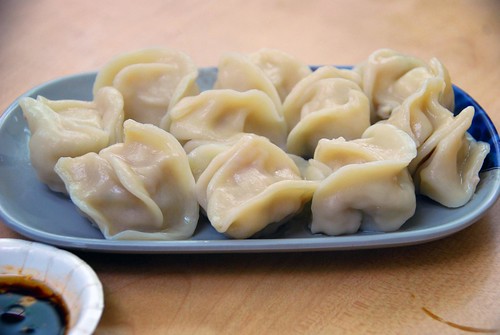
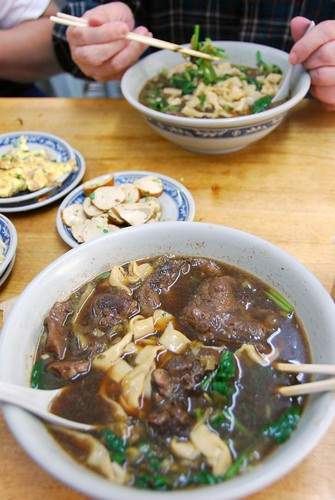
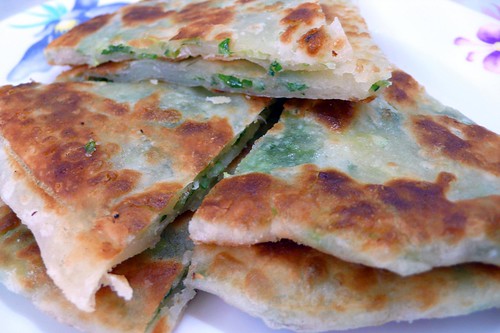

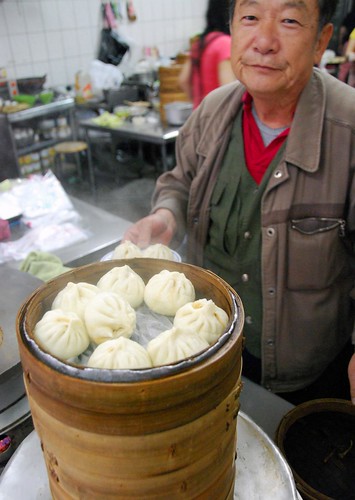

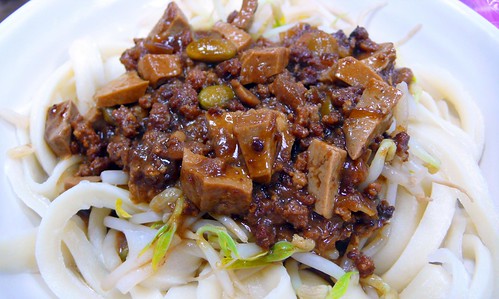

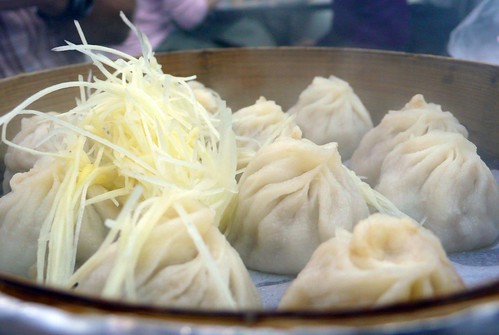
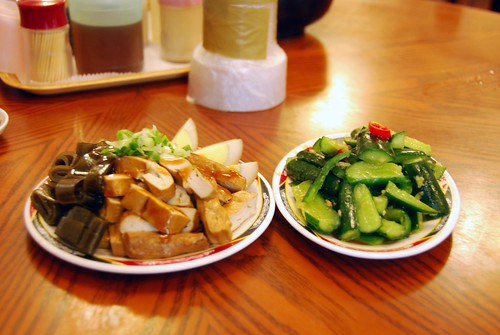
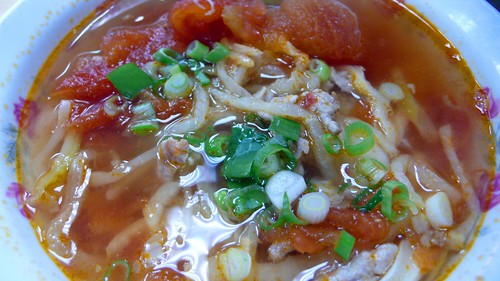
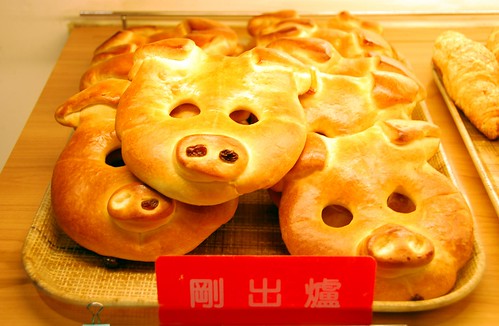

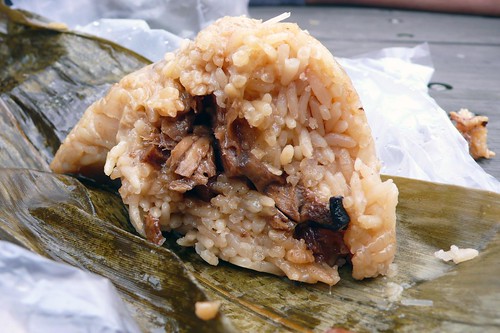
Wow, I’m totally missing Chinese food right now. Everything looks so mouthwateringly good. After being in Beijing and eating jiao zi, cong you bing, and hot pot all the time, I decided I need to make it. Now reading your post confirms the need to just do it.
Oh. My. God.
That is all I can say.
Oh. My. God.
I have heard that 7-Eleven stores in Taiwan sold total of 10 million tea leaf eggs last year. Imagine that….
It’s 11:30 a.m. Almost lunch time. Now I’m sooo hungry.
My quick lunch plan was a peanut butter and cucumber sandwich. What a disappointing contrast.
TETRAHEDRAL??? And I thought I’d be impressed by the photos. Which I am. Immensely. It all sounds so good and looks even better. Yay for ancestors!
I had to pause, catch my breath and wipe away tears before I could write a comment. Hope, those are all my favorites too, including the tomato/egg soup! I wish I could have all of those things right now and eat until my stomach exploded.
You probably don’t realize even Gu Gu me has been reading your story on trips here for a long time. These food are incredible.